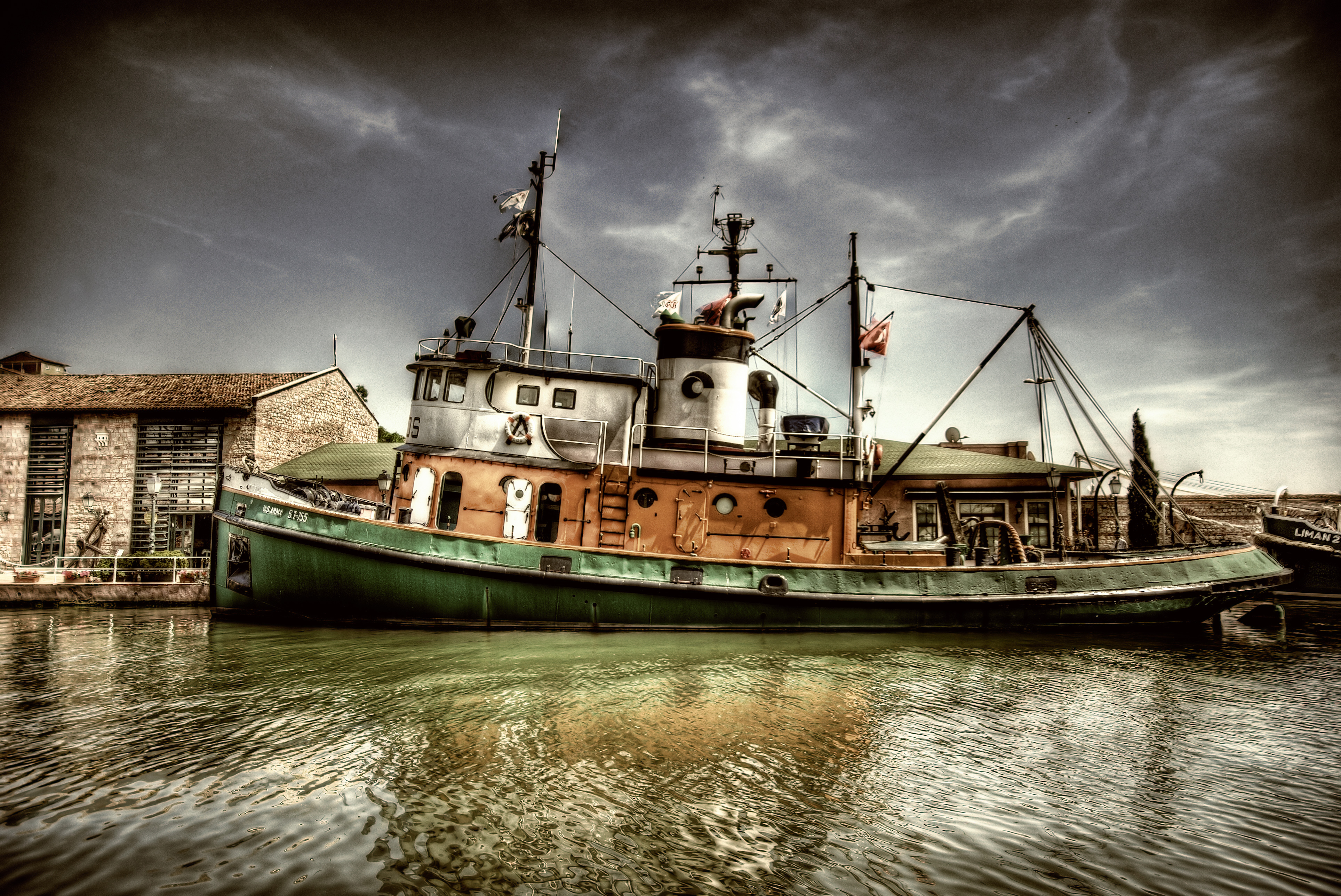First of all, HDR stands for High Dynamic Range. The dynamic range of a photograph is the distance between the darkest black and the lightest white in the photo, and how much room there is between each value. An HDR photo therefore has a much larger space between absolute black and absolute white, allowing for much more tonal definition and a reduced tendency for blacks to "crush" or whites to "blow out".
To create an HDR photograph is very simple. All one needs to do is "bracket" an exposure. This means, given any scene, to shoot one shot properly exposed, and one or more shots underexposed and one or more shots overexposed. The more shots in each direction, the wider the dynamic range.

Some cameras have HDR modes on them, and will take the appropriate shots automatically, and even tone map them (more on that in a minute) and even if not most DSLRs have an automatic bracketing feature that will at least set the shots up for you.
So once you have those shots, what do you do with them? You need to merge them together with a piece of software. Adobe Photoshop can do this, but I find it easier to work with a third-party piece of software like Photomatix (my favourite).
All you have to do is tell Photomatix which shots to use, what their exposure values are relative to one another (-2, -1, 0, +1, +2) and it will merge them together.
An HDR photograph, however, is no good if the monitor doesn't also support this dynamic range, and most do not. So the next step is to do what's called "tone mapping", which pushes the HDR image back into the dynamic range of most monitors. Isn't that counterproductive, though? Isn't the large dynamic range what we wanted in the first place?
Sort of, yes, but if nobody can view it then it doesn't make a difference. Tone mapping gives us sort of the best of both worlds, though, because it gives us more detail in the shadow and highlight ranges, which is what we were looking for. After tone mapping, you'll get something like this:
You can see in this shot that it is possible to make out detail in all areas of the photo, so the blacks aren't "crushed" and the whites aren't "blown".
HDR is an art form, and takes some practice not to make a photo too fake looking. With that practice, though, you can create some great looking images. Give it a shot!


The boat is amazing! My sister wants to be a professional photographer! I will tell her to visit your blog! sooo cool!!! thank you!!!
ReplyDeleteI like Dynamic Photo HDR. It kind of simplifies the process via cheating.
ReplyDeleteThose pictures look amazing! Especially boat and the city
ReplyDeleteDo you Photoshop your pics to perfection?
ReplyDeletelooks great!
ReplyDeletei like it .